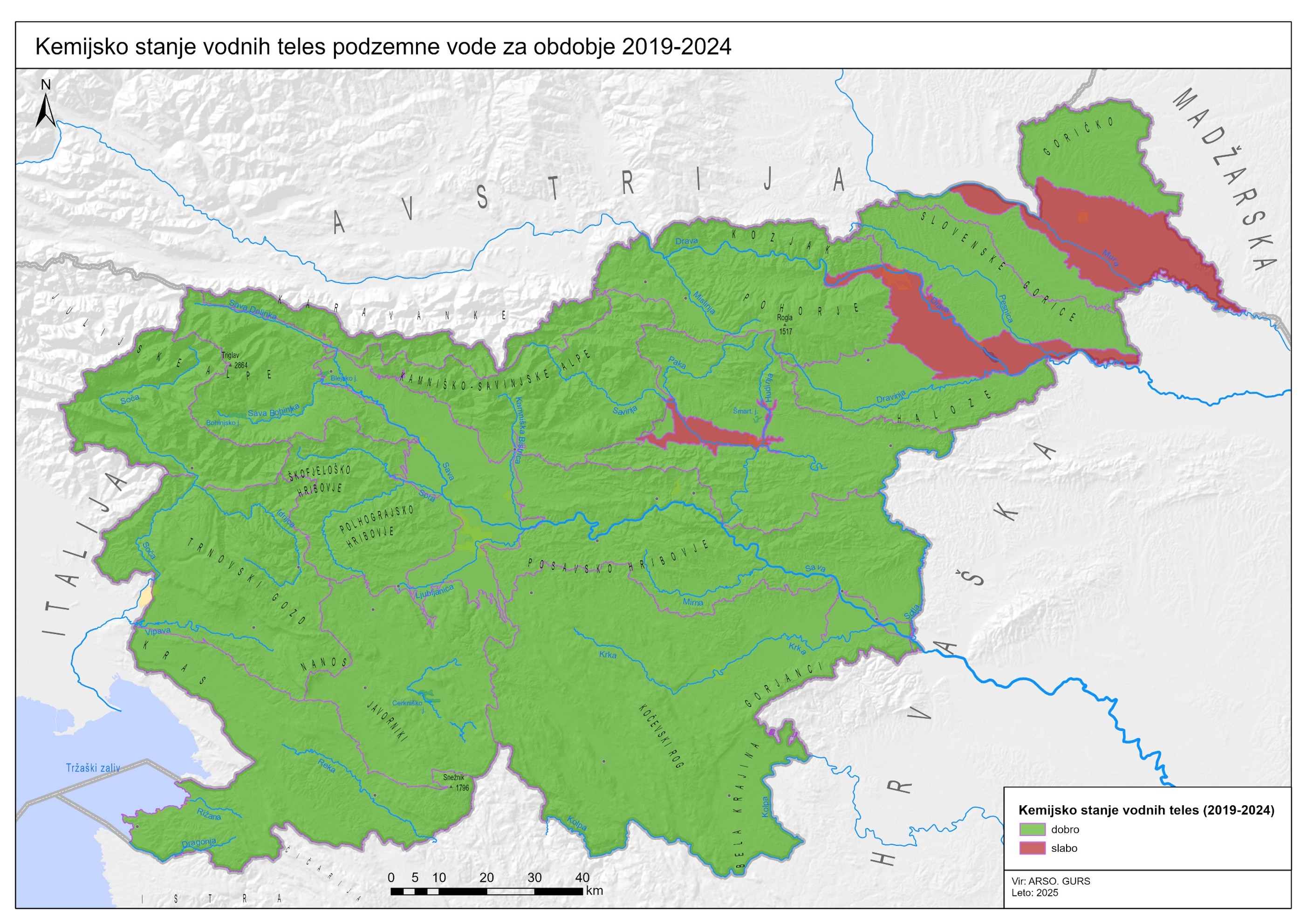[VD11] Groundwater quality

Key message

In 2024, we began reporting on the chemical status of groundwater for a longer six-year period, in line with the reporting cycle under the Water Framework Directive. Based on this assessment, the state adopts measures to improve water quality.
Groundwater is most affected by pollutants in intergranular aquifers located in the northeastern part of Slovenia. Poor chemical status for the period 2019–2024 was identified in the water bodies of the Savinja, Drava, and Mura basins. The main cause of poor chemical status in all water bodies was nitrate, with atrazine additionally contributing in the Drava basin.
Statistically significant downward trends in nitrate concentrations between 1998 and 2024 were observed in the Drava and Mura basin water bodies. In the Savinja basin, no statistically significant trend was detected during this period. A shorter dataset (2007–2024) for water bodies with poor chemical status does not show any statistically significant decrease in nitrate concentrations.
In the Drava basin, atrazine concentrations declined significantly during the period 1998–2024, whereas in the shorter dataset (2014–2024) no statistically significant trend was observed.
Charts
ARSO GURS (2025)
Groundwater quality (GIS viewer) (2025)
| Skorba V-5 (Drava basin)[µg/L] | Kidricevo (Drava basin)[µg/L] | quality standard[µg/L] | |
|---|---|---|---|
| 2005 | 0.18 | 1.02 | 0.10 |
| 2006 | 0.16 | 0.88 | 0.10 |
| 2007 | 0.16 | 0.87 | 0.10 |
| 2008 | 0.17 | 0.86 | 0.10 |
| 2009 | 0.16 | 0.69 | 0.10 |
| 2010 | 0.15 | 0.71 | 0.10 |
| 2011 | 0.17 | 0.72 | 0.10 |
| 2012 | 0.16 | 0.69 | 0.10 |
| 2013 | 0.15 | 0.58 | 0.10 |
| 2014 | 0.14 | 0.45 | 0.10 |
| 2015 | 0.14 | 0.41 | 0.10 |
| 2016 | 0.15 | 0.42 | 0.10 |
| 2017 | 0.15 | 0.37 | 0.10 |
| 2018 | 0.11 | 0.26 | 0.10 |
| 2019 | 0.13 | 0.29 | 0.10 |
| 2020 | 0.14 | 0.26 | 0.10 |
| 2021 | 0.13 | 0.22 | 0.10 |
| 2022 | 0.11 | 0.21 | 0.10 |
| 2023 | 0.13 | 0.20 | 0.10 |
| 2024 | 0.14 | 0.21 | 0.10 |
Goals
- To preserve a good chemical state of water in groundwater bodies;
- to improve the state of water in groundwater bodies in which the chemical state was assessed to be poor;
- to prevent upward trends in pollutant concentrations;
- to reverse upward trends in pollutant concentrations;
- to attain good chemical state of all groundwater bodies (environmental goals of Water Framework Directive, Article 4).









